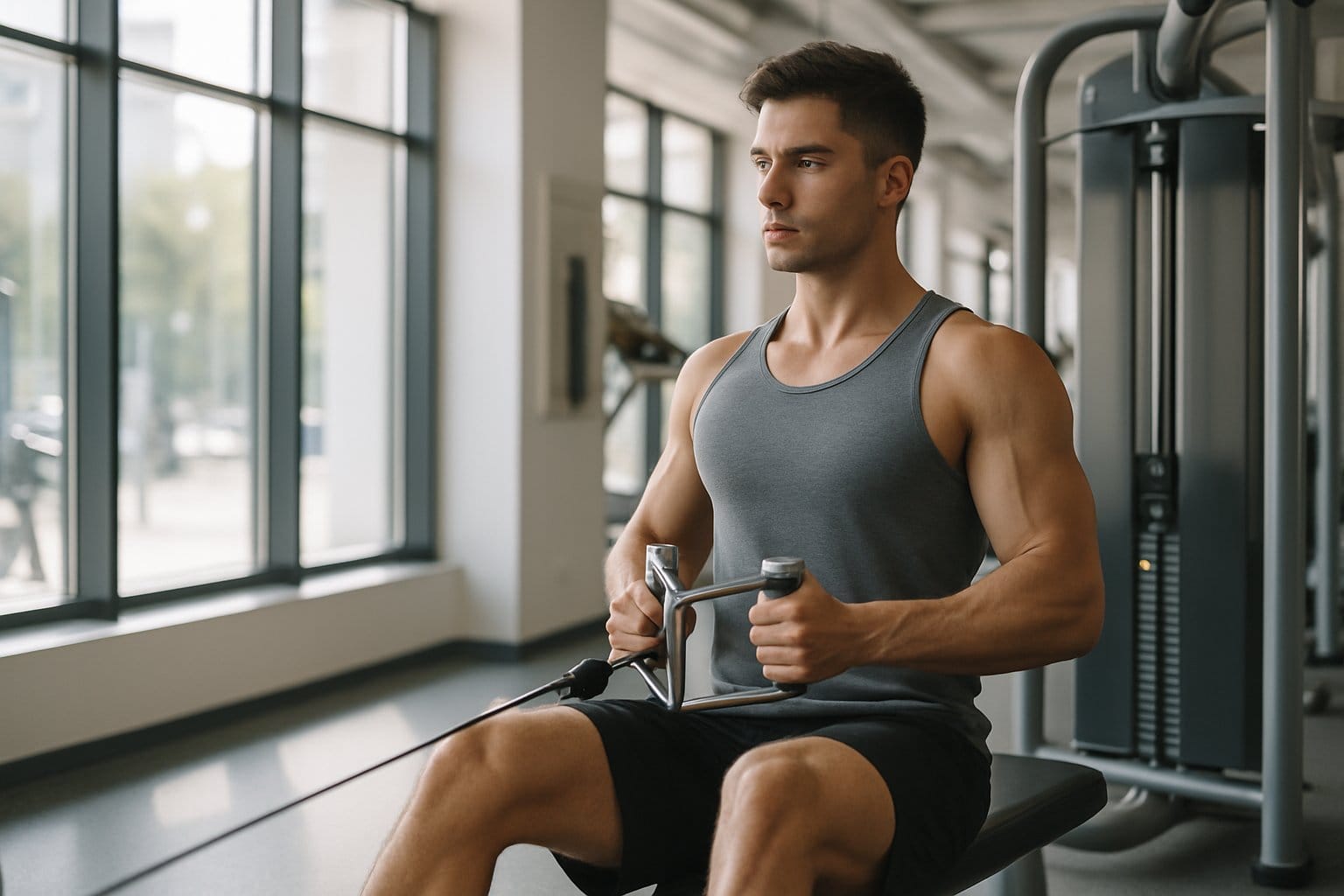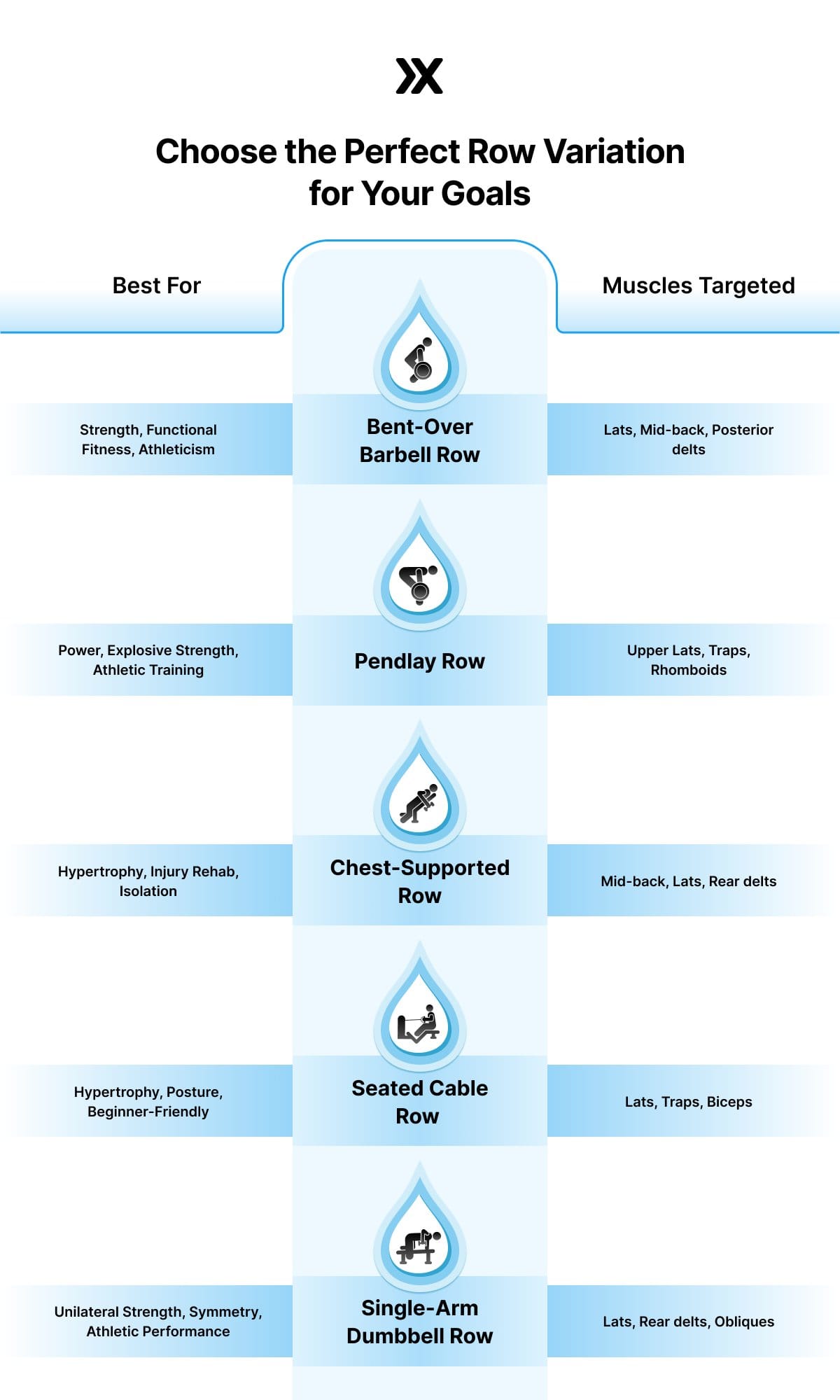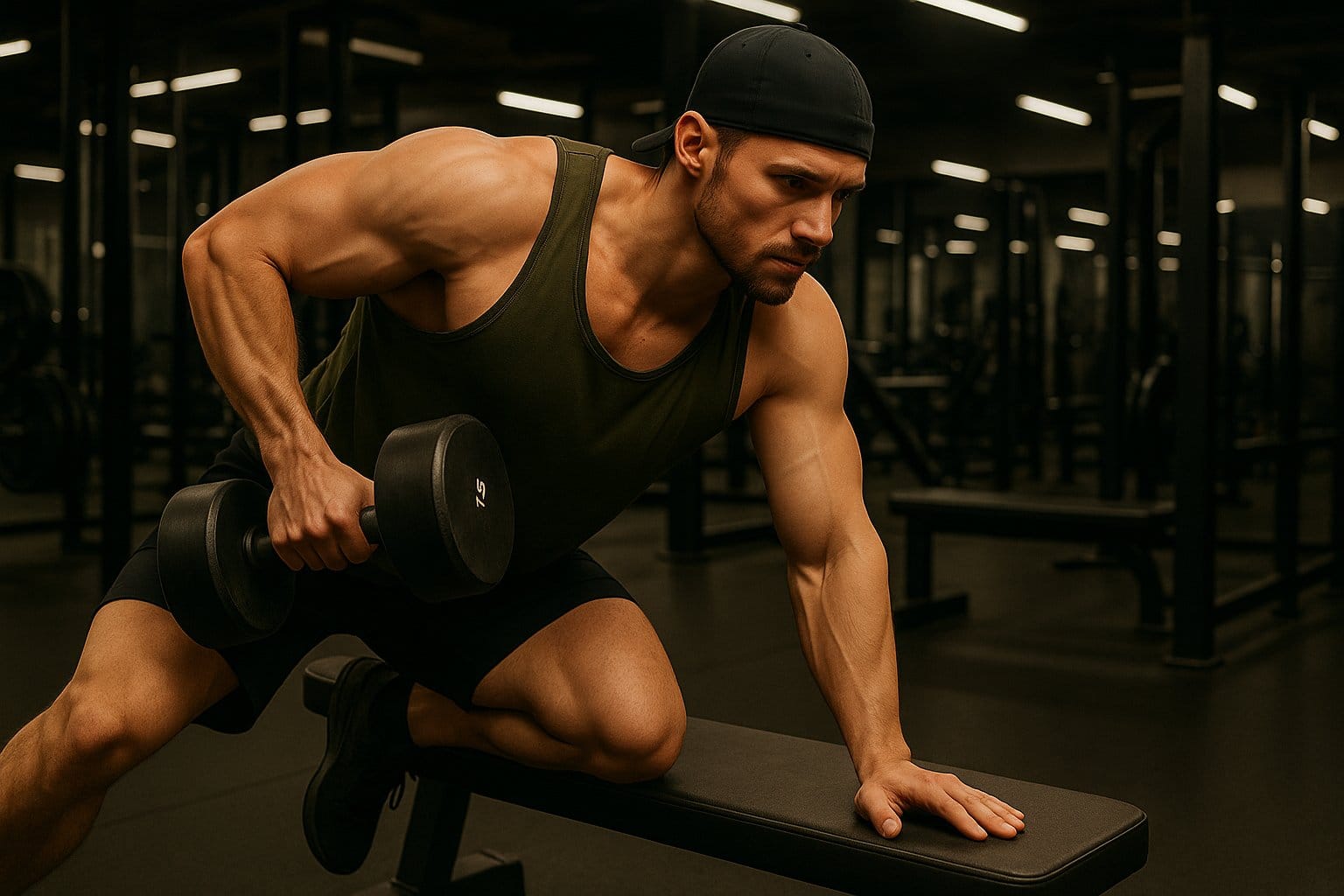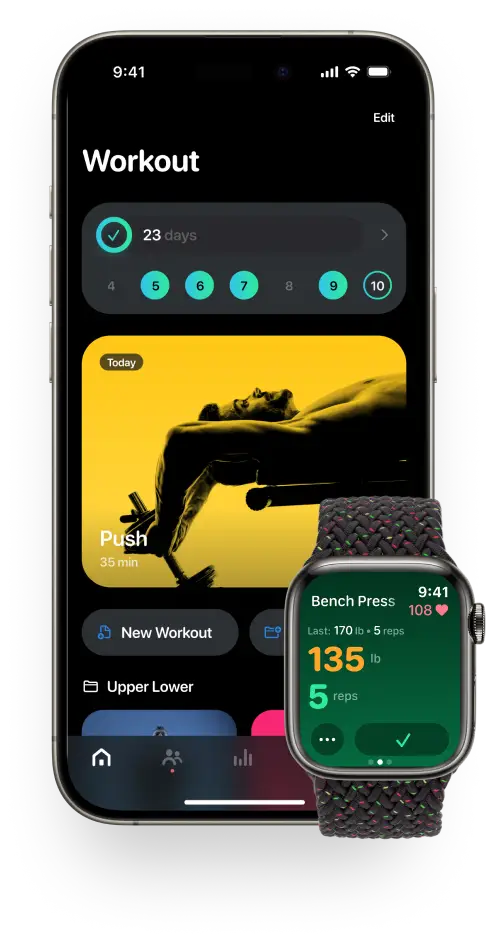Bent-Over Barbell Row vs. Other Row Variations: Which Builds a Stronger Back?
Bent-over barbell row vs. other variations: Discover which builds the strongest back, boosts hypertrophy, or safeguards your spine.
If you are on the quest to build a stronger and thicker back, you’ve probably heard of the bent-over barbell roll: a classic back exercise known for its effectiveness. But there are also so many row variations available — from Pendlay rows to seated cable rows — how do you know which is best for your fitness level and goals?
let's compare the bent-over barbell row to its alternatives, breaking down their pros, cons, and ideal use cases to help you craft the ultimate back workout routine.

The Bent-Over Barbell Row: A Closer Look
How It Works: Holding a barbell with a challenging amount of weight, hinge at the hips, and row towards your torso. This motion will engage the latissimus dorsi, the middle and lower trapezius, the rhomboids, and the posterior deltoids making for a solid compound back exercise.
Pros
Muscle Engagement: During its execution, the bent-over barbell row activates several important back muscles at once. This means it is a highly efficient exercise in terms of both time spent and strength gained.
Functional Strength: The bent-over barbell row is an exercise done with free weights, meaning that, besides strength, it also requires coordination and stabilization. Improving on these attributes translates directly into functional strength or strength that’s actually applicable in daily activities, such as helping a friend move or practicing a sport.
Hypertrophy Potential: Since several muscles are working at once, it’s possible to load up the bar with heavy weights. This in turn provides more engagement to the muscles resulting in improved muscle growth.
Versatility: The bent-over barbell row can be performed with overhand, underhand, or mixed grips to emphasize different muscles.
Cons
Technique-Dependent: Any free-weight exercise has a slightly higher skill floor than a machine counterpart. If you are new to the bent-over barbell row it will take some time before getting the form down.
Grip Factor: Your grip strength might be a limiting factor before your back strength is, which will devoid the exercise of its effectiveness. Training grip strength and wearing wrist straps can help with that.
Mobility Requirements: The bent-over barbell row requires adequate hip and hamstring flexibility to maintain proper positioning.
Best For: Intermediate/advanced lifters, strength athletes, and those prioritizing functional back development.

Other Row Variations: Pros, Cons, and Muscle Focus
1. Pendlay Row
Execution: In this variation you start with the bar on the floor, lifting it with an explosive row with a flat back, emphasizing power and scapular retraction.
Pros: Builds explosive strength, reduces momentum, and enhances scapular control.
Cons: This variation has less focus on the eccentric phase which can translate to less hypertrophy gains.
Muscle Focus: Upper lats, rhomboids, traps.
Best For: Powerlifters, CrossFit athletes, and lifters focused on strength.
2. Chest-Supported Row
Execution: With the chest-supported row, you’ll isolate the back muscles by rowing with dumbbells or a barbell while lying prone on an incline bench.
Pros: This variation completely eliminates your lower back from the equation, focusing solely on the back muscles.
Cons: Due to the nature of the exercise, you’ll neglect posterior chain engagement and will develop less functional strength.
Muscle Focus: Lats, rhomboids, rear delts.
Best For: Rehab, beginners, or lifters with lower back limitations.
3. Seated Cable Row
Execution: A classic machine exercise, row a cable attachment while seated, using a variety of handles (V-bar, wide-grip, etc.).
Pros: Constant tension on muscles, adjustable angles, and beginner-friendly.
Cons: The machine limits natural movement patterns leading to less core/stabilizer activation.
Muscle Focus: Lats, traps, biceps.
Best For: Hypertrophy-focused training, accessory work, or postural correction.

4. Single-Arm Dumbbell Row
Execution: Row a dumbbell with one arm while bracing the opposite hand/knee on a bench.
Pros: Great for addressing muscle imbalances, improves unilateral strength, and allows for a greater range of motion.
Cons: It can be time-consuming since we’re working with bilateral training and you won’t be able to lift as heavy as a traditional row.
Muscle Focus: Lats, rear delts, obliques (anti-rotation).
Best For: Athletes, physique competitors, and lifters targeting symmetry.
Which Row Variation Should You Choose?
As you can see, rows come and many shapes and forms. So, which one should you choose? Here are some quick recommendations:

Pro Tips for Maximizing Your Rows
Bent-Over Barbell Row: The best way to protect your lower back and maximize lat engagement is to keep the bar close to your body.
Pendlay Row: Remember to pause briefly at the bottom to eliminate momentum and focus on form.
Cable Row: This exercise is a great opportunity to enhance mind-muscle connection: Try to squeeze your scapulae at the peak contraction for 2 seconds.
Single-Arm Row: As you reach the top of the movement, do yourself a favor and rotate your torso slightly to engage the obliques and upper back.

(Muscular man in a cap performing a single-arm dumbbell row on a workout bench in the gym. Strength training exercise targeting back and arms.)
The Takeaway
The bent-over barbell row reigns supreme for building raw strength and a functional, athletic back. However, other row variations also fill critical gaps! Pick the one that works the best for your goals and routine. The most important thing is to keep active and keep consistent. That’s the only way to see results at the gym.
Ready to conquer the body of a Greek god? We’ve made it simple to work on customized fitness plans or to introduce a little friendly competition to your fitness community by sharing exercises with your friends. Get started for free through the Flex fitness app.
Related articles
How to Barbell Row: Form, Benefits & Tips
Stop Believing These 10 Gym Myths (According to Science)
Body Fat Percentage Calculator: What It Is and How To Use It


Get fit with Flex
Build muscle & lose weight fast for free.
Available on iPhone + Apple Watch





